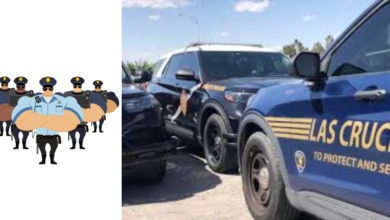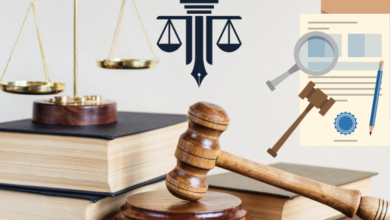Are All Bus Crashes the Same?
Common Causes of Bus Crashes
- Driver Error: Driver error is a leading cause of bus crashes. This includes speeding, distracted driving (e.g., texting, talking on the phone), fatigue, and driving under the influence of alcohol or drugs. Inadequate training or experience can also contribute to driver error.
- Mechanical Failure: Malfunctioning brakes, steering components, tires, or other critical vehicle systems can lead to accidents. Regular maintenance and inspections are essential to prevent mechanical failures. Negligence in this area often leads to preventable crashes.
- Negligent Maintenance: Improper maintenance or inadequate repairs can significantly increase the risk of bus accidents. This includes failing to address known mechanical issues, neglecting routine maintenance tasks, or using unqualified mechanics.
- Adverse Weather Conditions: Rain, snow, ice, fog, and high winds can make bus operation more hazardous. Drivers must adjust their speed and driving techniques to account for these conditions. Failure to do so can lead to loss of control and collisions.
- Road Defects: Potholes, uneven pavement, inadequate signage, and other road defects can contribute to bus accidents. Government entities responsible for maintaining roads may be held liable for accidents caused by negligent road maintenance.
- Traffic Congestion: Heavy traffic and stop-and-go conditions can increase the risk of bus accidents, particularly in urban areas. Buses often have limited maneuverability in congested traffic, making them vulnerable to collisions.
- Passenger Behavior: Disruptive or unruly passenger behavior can distract the bus driver and contribute to accidents. While less common, this is a factor that needs to be investigated if reported.
Determining Liability in Bus Crashes
- Bus Driver 📌 The bus driver may be held liable for the accident if it was caused by their negligence, such as speeding, distracted driving, or driving under the influence.
- Bus Company 📌 The bus company may be held liable for the accident if it was caused by negligent hiring, training, or supervision of the driver, or by negligent maintenance of the bus.
- Bus Manufacturer 📌 The bus manufacturer may be held liable for the accident if it was caused by a defect in the design or manufacturing of the bus.
- Maintenance Company 📌 The maintenance company responsible for servicing the bus may be held liable for the accident if it was caused by their negligence in maintaining or repairing the bus.
- Government Entity 📌 A government entity responsible for maintaining the roads may be held liable for the accident if it was caused by negligent road maintenance, such as failing to repair potholes or providing inadequate signage.
- Other Drivers 📌 Other drivers may be held liable for the accident if their negligence contributed to the crash. For example, a driver who ran a red light and collided with the bus may be held liable.
- Third-Party Contractors 📌 Third-party contractors who performed work on the bus may be held liable if their negligent work contributed to the accident.
- Parts Suppliers 📌 Suppliers who provided defective parts for the bus may be held liable if the defective part caused the accident.
Unique Challenges in Bus Accident Cases
- Multiple Claimants Bus accidents often involve numerous injured passengers, each with their own claim for damages. This can create logistical and legal complexities in coordinating discovery, settlement negotiations, and trial proceedings.
- Higher Policy Limits Buses typically carry higher insurance policy limits than passenger vehicles. While this can provide a greater pool of funds for compensating victims, it can also lead to more aggressive defense strategies from insurance companies.
- Government Regulations Bus operations are subject to extensive federal and state regulations, including safety standards, driver qualifications, and maintenance requirements. Understanding these regulations is crucial for establishing negligence in a bus accident case.
- Spoliation of Evidence Bus companies may have a legal obligation to preserve evidence related to the accident, such as the bus’s event data recorder (EDR) or maintenance records. However, there is a risk that this evidence may be lost, altered, or destroyed, which can significantly hamper the victim’s ability to prove their case.
- “Black Box” Data Many modern buses are equipped with event data recorders (EDRs), often referred to as “black boxes.” These devices record information such as speed, braking, and steering inputs in the moments leading up to a crash. Accessing and interpreting this data can be crucial for reconstructing the accident and establishing liability.
- Identifying all Passengers Identifying and contacting all passengers who were on the bus at the time of the accident can be challenging, but it is essential for gathering witness testimony and building a strong case.
- Premature Repairs Bus companies may attempt to repair the bus prematurely in an effort to conceal evidence of negligence. It is important to take immediate steps to inspect the bus and document its condition before any repairs are made.
Types of Buses and Their Specific Risks
School Buses
School buses, primarily designed for transporting children, prioritize safety with features like flashing lights, stop-arm signals, and high-visibility paint. However, risks persist, especially when other drivers neglect these signals, endangering child passengers. Inclement weather can further complicate matters, increasing risks for young occupants.
Transit Buses
Operating within cityscapes, transit buses navigate congested routes frequently, facing challenges such as sudden stops, unexpected pedestrian crossings, and collisions with other vehicles. Passengers aboard transit buses often lack seatbelts, heightening the risk of injuries from abrupt stops or impacts.
Charter Buses
Charter buses, utilized for long-distance excursions and tours, confront distinctive risks. Driver fatigue, stemming from extended hours on the road, poses a significant hazard, particularly on lengthy journeys. Additionally, passengers aboard charter buses may not be consistently wearing seatbelts, escalating injury risks in the event of an accident.
Shuttle Buses
Frequently employed near airports, hotels, and parking amenities, shuttle buses often handle crowded conditions and brief journeys. Their constant stopping and starting, combined with the potential for accidents involving pedestrians and other vehicles, present unique safety challenges.
Legal Assistance Options
Navigating the intricate landscape of bus accident cases requires legal experience.
Engaging an experienced bus accident attorney offers numerous advantages:
Here are the advantages of consulting with an attorney:
- Case Assessment
- Investigation
- Negotiation
- Litigation




